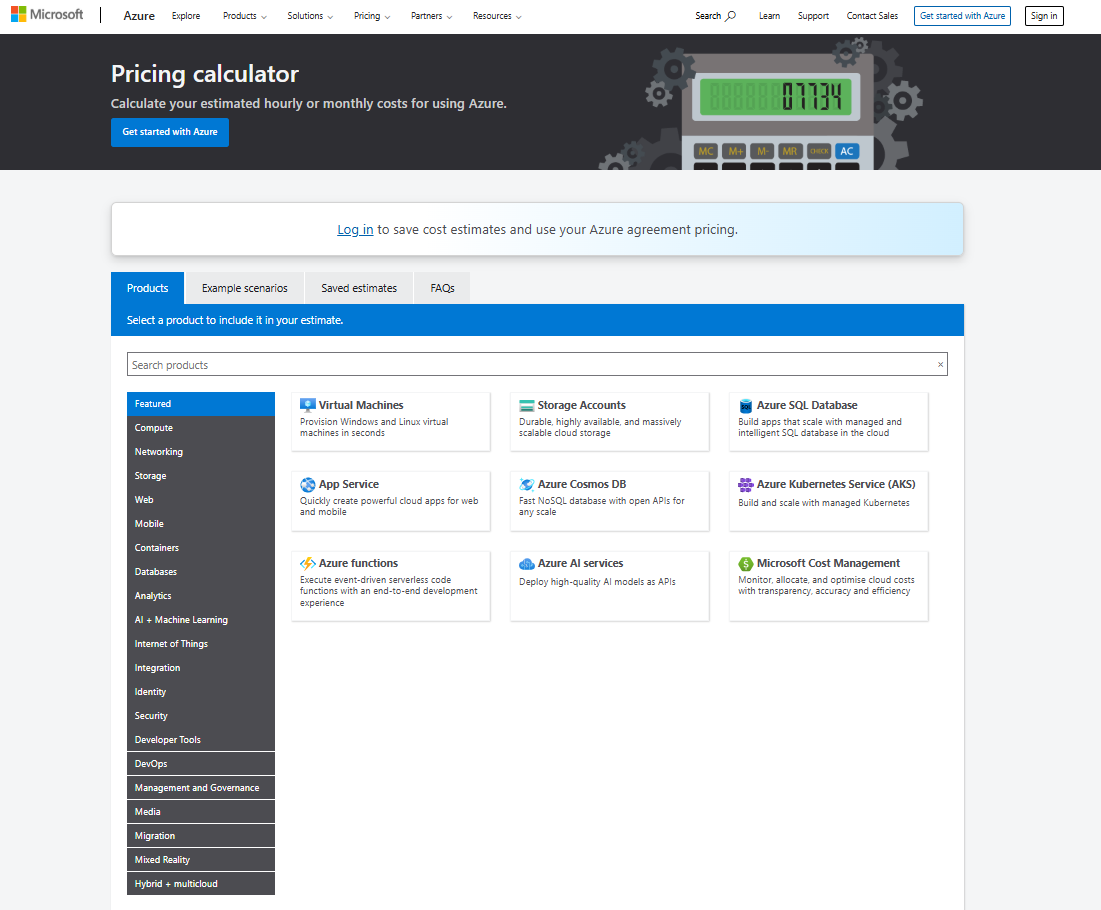Whether you are embarking on your Azure journey for the first time or are already managing workloads in the cloud, it is vital to base your strategy on established best practices. The Microsoft Cloud Adoption Framework for Azure provides a robust collection of guidelines, documentation, and tools designed to align your cloud adoption initiatives with your business objectives. A fundamental aspect of this journey is grasping the financial implications of migrating to the cloud.
When considering the migration of workloads to Azure, calculating the total cost of ownership (TCO) is a key step. TCO serves as a comprehensive metric that encompasses all cost elements over the lifespan of the resource. A well-executed TCO analysis can yield valuable insights that enhance decision-making and promote financial efficiencies. By comprehensively understanding the costs associated with transitioning to Azure, you can make informed decisions that resonate with your business goals and budgetary constraints.
Here is an outline of the primary components needed to build your TCO:
- Current infrastructure configuration:
- Servers: Gather details about your existing servers, including quantity, specifications (CPU, memory, storage), and operating systems.
- Databases: Collect information on your current databases, such as type, size, and any licensing costs involved.
- Storage: Identify the type and amount of storage currently utilised, including redundancy or backup solutions.
- Network traffic: Consider outbound network traffic along with any associated costs.
- Azure environment configuration:
- Virtual machines (VMs): Identify suitable Azure VMs that correspond to your current server specifications based on CPU, memory, storage, and region.
- Storage options: Determine types of storage (e.g., Standard HDD, Premium SSD), access tiers, and redundancy options that meet your requirements.
- Networking: Consider networking components such as virtual networks, load balancers, and bandwidth needs.
- Operational costs:
- Power and cooling: Estimate the costs linked to power and cooling your on-premises infrastructure.
- IT staffing: Include expenses for IT personnel needed to manage and maintain your current infrastructure.
- Software licensing: Account for any software licensing fees that may arise in both current and Azure environments.
Once you have clarity on these inputs, you can enhance your analysis with additional tools based on your specific needs. The Azure Pricing Calculator is excellent for providing detailed cost estimations for various Azure services and products. If your goal is to estimate costs and savings during migrations, the Azure Migrate business case feature should be your go-to option, as it enables detailed financial analysis (TCO/ROI) for optimal pathways forward while assessing readiness for moving workloads to Azure confidently.
Understanding your Azure costs
The Azure Pricing Calculator is a complimentary cost management tool that helps you understand and estimate the costs associated with Azure services and products. It serves as the only unauthenticated interface that allows you to configure and budget for the expected costs of deploying solutions in Azure.
This tool is crucial for effectively adopting Azure. Whether you are in a discovery phase assessing what services to use or in a post-purchase phase optimising your environment and reviewing negotiated prices, the Azure Pricing Calculator meets the needs of both new users and existing customers.
The calculator enables you to plan and forecast cloud expenditures, evaluate different configurations and pricing models, and make informed decisions regarding service selection and deployment options.

Decide, plan, and execute your migration to Azure
Azure Migrate is Microsoft’s free platform for migrating to and modernising workloads in Azure. It offers capabilities for discovery, business case (TCO/ROI) assessments, planning, and migration in a workload-agnostic manner. To begin, you need to have an Azure account and create a migration project within the Azure portal. Azure Migrate accommodates various migration scenarios, including VMware and Hyper-V virtual machines (VMs), physical servers, databases, and web applications. The service provides both accurate appliance-based and manual discovery options tailored to customer requirements.
The Azure Migrate process consists of three core phases: Decide, Plan, and Execute.
- In the Decide phase, you explore your IT landscape through various supported methods while generating a dependency map for applications to collocate all resources belonging to an application. Using this data allows for estimating costs and savings via the business case (TCO/ROI) feature.
- The Plan phase involves assessing readiness for migration, obtaining right-sized recommendations for targets in Azure, and selecting tools suitable for migration strategies (IaaS/PaaS). You can also formulate a migration plan comprising iterative "waves" where each wave includes all dependent workloads for applications scheduled for transition during maintenance windows.
- Finally, the Execute phase concentrates on the actual migration of workloads into a test environment in Azure methodically to ensure a seamless and efficient transition.

A critical aspect of the Azure Migrate process is developing a business case before proceeding with the move; this aids you in recognising the value that Azure can provide. The business case capability highlights TCO with discounts while comparing costs and savings between on-premises setups and Azure deployments, including considerations for end-of-support (EOS) Windows OS and SQL versions. It offers year-on-year cash flow analysis accompanied by resource utilisation insights while identifying quick wins for migration and modernisation –focusing on long-term cost savings by shifting from a capital expenditure model to an operating expenditure model where you only pay for what you use.
Understanding the TCO is vital for making educated decisions during the migration of workloads to Azure. By thoroughly evaluating all cost components – including infrastructure, operational expenses, facilities costs, licensing fees, and migration costs – you can optimise your cloud strategy to achieve financial efficiencies. Utilising tools like the Azure Pricing Calculator and Azure Migrate will provide comprehensive insights that ensure a smooth transition to the cloud.